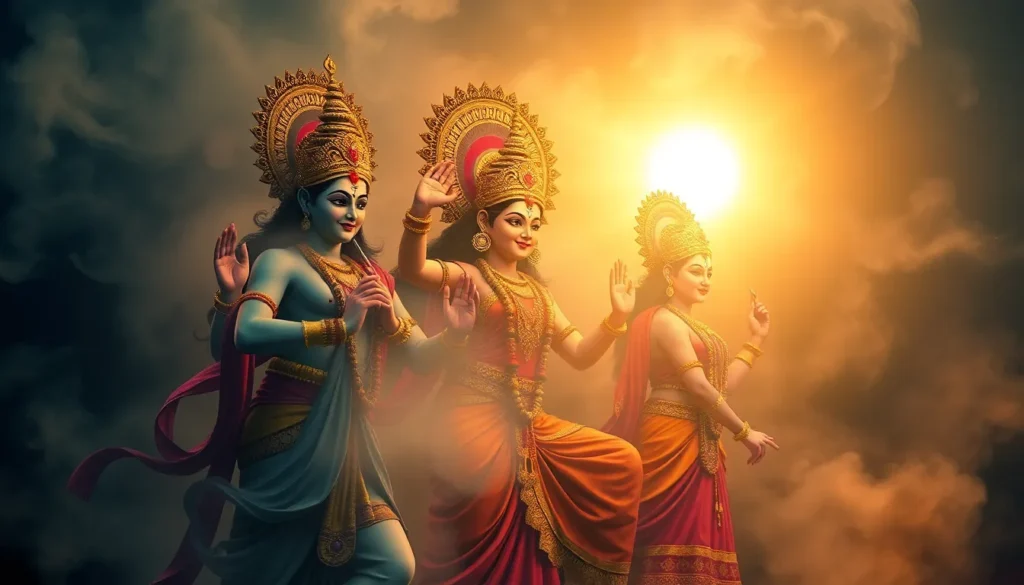KUMBHA MELA 2025:
The Sanskrit word Kumbha means the Pot and Mela is the congregation of people from different countries, different faiths and culture. The story of this Kumbha Mela is one of the most significant spiritual gatherings in the world, celebrated in India with immense devotion and reverence. Rooted in ancient Hindu traditions, the festival occurs at four sacred locations—Prayagraj, Haridwar, Ujjain, and Nashik—each tied to the mythology of the churning of the ocean (Samudra Manthan). According to legend, drops of the divine nectar of immortality (amrita) fell at these locations, sanctifying them as spiritual hotspots.
The essence of Kumbha Mela lies in its blend of cosmic alignment, spiritual cleansing, and collective devotion. The festival’s timing is determined by specific planetary configurations, primarily involving Jupiter, the Sun, and the Moon. These alignments are believed to amplify spiritual energy, making it an auspicious period for sadhana (spiritual practice) and self-purification.
Millions of devotees, saints, yogis, and seekers from around the globe arrive to participate in rituals like the Shahi Snan (royal bath) in sacred rivers. This act symbolizes the washing away of sins and the renewal of the soul. The event also serves as a vibrant platform for yogic teachings, spiritual discourses, and the preservation of ancient traditions.
Beyond its cultural and religious significance, Kumbha Mela is a profound spiritual experience—a journey toward inner awakening, cosmic connection, and unity with the divine. It embodies the timeless quest for moksha (liberation) and serves as a reminder of humanity’s shared spiritual heritage.

-
Significance of Cosmic Alignments in Determining Timing of Kumbha Mela:
The time for Kumbha Mela is inextricably tied with the cosmic conjunction as if to emphasize that cosmic movements are part of spiritual pursuits in Indian tradition. Dates of the festival are calculated by the articular astrological configuration of the placement of Jupiter, the Sun, and the Moon. Such configurations are considered to make this period very conducive to the environment for spiritual progress and purification.
i. Key Cosmic Alignments:
- When the Sun enters Capricorn and Jupiter is in Aquarius (Kumbha), the cosmic energies are believed to reach their peak, creating a spiritual atmosphere for enlightenment and liberation. It is said that during this period six crores and 6 thousand pious places and holy rivers are united at Prayagraj during Kumba Mela.
- Jupiter in Aquarius (Kumbha Rashi):
Jupiter, known as the Guru or the teacher, is a planet associated with wisdom, spiritual expansion, and higher consciousness. When Jupiter enters Aquarius (Kumbha Rashi), it is considered a powerful time for collective spiritual energy to flourish. - Sun in Aries(Mesh Rashi) or Leo (Simha Rashi):
The Sun, representing the soul and vitality, plays a critical role in enhancing the spiritual potency of the Mela. Its position, often in Aries or Leo during specific Kumbha Melas, signifies a time of spiritual illumination and renewal. - Moon’s Influence:
The Moon governs emotions and intuition in Vedic astrology. Its alignment with the Sun and Jupiter during the festival amplifies the energy conducive to spiritual practices, meditation, and cleansing rituals.
ii. Why These Alignments are important:
- Amplification of Cosmic Energy: The specific planetary configurations are believed to create a unique cosmic vibration that magnifies the effects of spiritual practices like meditation, mantra chanting, and bathing in sacred rivers.
- Connection to Universal Consciousness: The alignment of celestial bodies is seen as a reflection of divine order. Participating during these times helps align the individual soul (Atman) with the universal consciousness (Brahman).
- Mythological Significance: According to the legend of Samudra Manthan, the drops of nectar fell during such celestial alignments, marking these times as sacred for achieving spiritual purification.
iii. Spiritual Effects of Participants:
The timing also ensures that it takes place in a period when cosmic energy is high, ideal for seekers who want to:
- Cleanse karmic impurities.
- Improve spiritual vibrations through yogic practices.
- Attune their inner selves to the rhythm of the universe.
The cosmic alignments of Kumbha Mela underscore the profound relationship between the heavens and human spirituality, reminding us that all existence is interconnected. For yogis and spiritual seekers, this celestial combination is not just a calendar marker but a cosmic invitation to transcend the mundane and embrace the divine.
2. Cosmic Energy and Yogic Practices during Kumbha Mela:
- The Yogic Interpretation of Cosmic Energies:
From the Yogis’ point of view, the universe is seen as a big, interdependent web of energy where everything-from the stars in the sky to the cells in the human body are vibrationally linked. Cosmic energies are regarded as universal forces influencing not only the external world but also the inner states of the mind and body. Yogis, through their practices, strive to align themselves with these energies to attain spiritual growth and self-realization.
- The Link between Human energies and cosmic energies:
Yogic teachings explain that the human body is a microcosm of the universe. This idea is summed up in the term “Yatha Pinde, Tatha Brahmande” (As is the body, so is the cosmos). The Sun and Moon’s energies are the Ida, Pingala, and Sushumna Nadis in the body, and the planetary influences guide one’s karmic and spiritual journey. Here it is to be mentioned that the three Rivers Ganga, Yamuna, and Saraswati (Ida, Pingala, and Sushumna) meet at Prayagraj(Sashrara) resembles the three Nadis meet at Sashrara and take the Elixir of Kumbha.
- The Universe is a manifestation of Energy:
According to Yogic texts, we learn that the cosmos is an expression of Prana, the life force or vital energy. This energy creates all of the creations, including the human body. The celestial bodies—the Sun, Moon, planets, and stars—emit subtle vibrations that affect the flow of prana within us, influencing our physical, mental, and spiritual states.
- How to use Cosmic energies through Yoga practices:
Yogis consider cosmic energies as a means of inner transformation. By tuning into these forces, the yogis can intensify their sadhana (spiritual practice):
- Meditation and Mantras: Specific mantras, such as the Gayatri mantra, Navagraha Mantra Vishnu Mantra, and others are designed to channel the energy of celestial bodies, particularly the Sun as per the Yogi’s Guru.
- Surya Namaskar, or Sun Salutation: This is a series of postures honoring the Sun, considered the giver of life and spiritual illumination.
- Lunar Practices: Yogis practice meditative and restorative practices at times of full moon and new moon to observe the deep calming, retreating energy of the Moon.
- The Influence of Celestial Alignments on Yogis:
The positions of the planets and stars, especially when major cosmic events such as eclipses or Kumbha Mela alignments occur, are considered powerful moments to perform spiritual practice. Such alignment enhances the availability of cosmic energy, making it easier for yogis to transcend ordinary awareness and connect with the universal consciousness.
- Cosmic Energy and Chakras:
The general belief of the yogis is that the cosmic energies can be absorbed and stored in the body’s energy centers, or chakras. For example: The Manipura Chakra is energized by the Sun’s energy, enhancing vitality and self-confidence. The Sahasrara Chakra is associated with universal consciousness, representing spiritual enlightenment.
- Living in Harmony with Cosmic Rhythms:
It is believed by the yogis to living in harmony with the cosmic rhythms of day and night and seasonal changes. This harmony gives rise to a healthy body, balanced emotions, and spiritual growth. Fasting on eclipses and meditation during planetary transits is based on this concept.
3. The Role of Sacred Rivers in Cosmic Connection during Kumbha Mela:

- Mythological significance of the Ganga, Yamuna and Saraswati:
The Ganges, Yamuna, and Saraswati are rivers that in Indian tradition indicate significant mythological, spiritual, and cultural reverence. The mythological significance does not just belong to these rivers; it also provides purity, the spirit of life, and spiritual enlightenment. The place where all these three holy rivers meet has become the Triveni Sangam and happens to be an important focus in Kumbha Mela among millions of worshipers and yogis.
- The Ganges (Ganga): The Holy and Eternal Purifier.
Mythological Origin: According to various ancient Hindu scriptures and myths, the Ganges was said to have been sent from heaven to earth by having her flow from the locks (Jata) of Lord Shiva. This was done to control her massive power so that it did not lead to widespread destruction. Spiritual Significance:
The Ganga is depicted as a goddess whose waters purify all sins. To wash one’s soul and attain spiritual liberation (Moksha), it is necessary to bathe in her waters. The Ganga is also symbolized as the flow of divine grace and the journey of the soul towards enlightenment in Yoga.
- The Yamuna: The River of Devotion and Love
Mythological Origin: The Yamuna is the daughter of the Sun God (Surya) and sister of Yama, the god of death. Her waters are said to grant freedom from the fear of death and the cycle of rebirth.
Association with Lord Krishna: The Yamuna is closely linked to Lord Krishna who in Vrindavan performed many of his divine leelas (playful acts) along her banks. They are symbolized in the form of Yamuna as bhakti or selfless love and invoked the yogi to cultivate love in its selfless form.
- The Saraswati: A Concealed River
Mythological Origin: Saraswati is regarded as the goddess of wisdom, learning, and the arts. The Saraswati River is believed to be a hidden river today, but it is learned to have flowed abundantly and joined with the Ganges and Yamuna earlier. Presently, it is seen that all these three holy rivers join at Prayagraj (Allahabad).
Connection to the Vedas: Saraswati is said to be the fount of Vedic wisdom and divine inspiration, so her river would be sacred to seekers of spiritual and intellectual knowledge.
Symbolism in Yoga: Saraswati represents jnana, or knowledge, and the flow of inner wisdom that leads to the spiritual awakening.
- The Triveni Sangam: The Sacred Confluence
Mythological Importance: Prayagraj is said to be the Triveni Sangam, the spot where three rivers meet. Of these three, the Ganges and the Yamuna can be seen while the Saraswati flows keeping her identity concealed. In this sense, it symbolizes the union of the physical and the spiritual.
Spiritual belief: The person is purified from all sins, liberated from life cycles, and gets merged with the universal consciousness by bathing at the Triveni Sangam.
Yogic Perspective: The union symbolizes the joining of the three main Nadis in the human body, namely Ida, Pingala, and Sushumna, which is the essence of achieving spiritual enlightenment.
The Ganges, Yamuna, and Saraswati are more than rivers; they are spiritual guides that inspire yogis and devotees to seek higher truths. Their mythological significance underscores the sacred interplay between nature and divinity, reminding humanity of the profound connection between the physical and the spiritual. Through their waters, they invite seekers to cleanse, transform, and journey toward liberation.
4. The spiritual magnetism of the Akharas (Spiritual Monasteries) in Kumbha Mela:
i. The Role of Akharas as Cosmic Wisdom Center: Akharas, the spiritual centers deeply connected with Indian yogic traditions, serve as vital centers for preserving and spreading cosmic wisdom. These ancient institutions, rooted in the practices of Hindu dharma, have been the custodians of yogic knowledge, spiritual discipline, and esoteric teachings for centuries. During the events like the Kumbha Mela, Akharas play a pivotal role for bringing together ascetics, yogis, and seekers to explore and align with universal truths.
ii. Some of the Important Akharas in Kumbha Mela:
Akharas are an integral part of the Kumbha Mela, representing the rich spiritual heritage of India. They are primarily divided into three major groups: Shaiva (followers of Lord Shiva), Vaishnava (followers of Lord Vishnu), and Udasi/Niranjani (ascetic orders and reformist sects). Each akhara has a unique lineage, philosophy, and practices. Below are some of the most prominent akharas:
- Shiva Akharas (Those who follow Lord Shiva)
- Juna Akhara: One of the oldest and largest akharas. It is known for its Naga Sadhus (naked sadhus) who follow rigorous ascetic practices.
- Mahanirvani Akhara: So far information gathered it was established in the 8th century. It is famous for its deep focus on Vedic rituals and spiritual discipline.
- Atal Akhara: It is known for its scholars and teachers who emphasize ancient scriptures.
- Niranjani Akhara: It is most important and plays a prominent role in disseminating yoga and ascetic traditions.
- Anand Akhara: Focuses on spiritual practices and the study of yogic philosophy.
- Ahwan Akhara: It is often used to convey a sense of resolution or completion regarding a matter.
- Vaishnava Akhara (Those who follow Lord Vishnu):
- Nirmohi Akhara: Known for its role in preserving Vaishnava traditions. Involved in the promotion of Ram Bhakti (devotion to Lord Rama).
- Digambar Akhara: These people are associated with the worship of Vishnu and ancient Vaishnava practices.
- Nirvani Akhara: Nirvani Akhara promotes Vaishnava teachings and spiritual growth through devotion.
- Panchangi Akhara: Panchangi indicates the five elements (or aspects) that practitioners focus on for a balanced life.
- Udasin Akhara: Followers of Guru Nanak
- Nagpanthi Gorakhnath Akhara: Followers of Gorakhnath
iii. Historical and Spiritual origins of Akharas: From various ancient scriptures we get that Adi Shankaracharya founded the Akharas that played a critical role in the Kumbh Mela. These akharas have the key roles in the organizing of the Mahakumbh and are categorized into three sections: Shaiva Akharas, those who worship Lord Shiva, Vaishnava Akharas, whose favored deity is Lord Vishnu, and lastly Udaseen Akhara, a sect founded by the son of the Sikh community’s first guru.
- Akharas as Platforms for Yogic Practices:
- Physical and Spiritual training: Akharas provide rigorous training in asanas, pranayama, and meditation, helping practitioners align with cosmic forces.
- Kumbha Mela Gathering: At Kumbha Mela, akharas present their spiritual strength, participating in the Shahi Snan (royal bath) and other sacred rituals, symbolizing their unity with the divine cosmos.
- Role of Gurus and Sadhus: Gurus and sadhus in akharas are seen as living Gods of yogic wisdom. Their insights on the cosmos often stem from deep meditation and spiritual realization. They share their deep knowledge that help disciples understand how cosmic energies influence human destiny and spiritual evolution.
- Modern Relevance of Akharas: In a rapidly changing world, akharas continue to uphold traditions that connect humanity to its cosmic roots. They provide a space for yogis to explore ancient techniques that align with the energies of the universe.
By guiding the disciples in aligning with universal energies, akharas fulfill a crucial role in humanity’s spiritual evolution. They remind us that the path to understanding the cosmos begins within, through disciplined practice, devotion, and the pursuit of eternal truths.

5. Insights of Yogis on Cosmic Connection in Kumbha Mela:
The Kumbha Mela consists of a host of spiritual leaders who represent wisdom from the universe. Eminent yogis and sages had spoken at length about the celestial significance of this festival, teaching how it brings people closer to universal truth through spiritual transformation. Here are a few examples that are quite reflective of the deeper cosmic nature that the Mela embodies.
- Paramahansa Yogananda on Celestial Alignments: Paramahansa Yogananda, the author of Autobiography of a Yogi, said that Kumbha Mela is very astrologically precise. He explained: “The cosmic alignments that mark the Kumbha Mela are not arbitrary; they are divine reminders of the unity between the microcosm and the macrocosm. When you align your inner self with these celestial forces, you experience your oneness with the infinite.”
According to Yogananda, one should take this opportunity of the Mela to attune himself to the cosmic forces and enhance his spiritual life.
- Swami Vivekananda’s Perspective on Unity in Diversity: Swami Vivekananda saw in the Kumbha Mela a living embodiment of the cosmic principle of unity. He once remarked: “The amassing of millions at the Kumbha Mela is a microcosm of the universe—diverse yet unified in its quest for truth. It is here that one can see how the cosmic order harmonizes all beings into a single rhythm of divinity.”
This teaching underlines the Mela as a space for seekers to transcend differences and experience universal oneness.
- Babaji’s Mystical Encounter with Cosmic Energies: Babaji is the eternal yogi, in the Himalayan region, and one finds a confluence of his cosmic essence at Kumbha Mela. As anecdotes narrate, he comes to guide selected seekers. He teaches, and his preachings are,
“The real pilgrimage lies not in reaching the banks of the river but in finding out the infinite ocean of consciousness lying within oneself.
This mystic perspective encourages seekers to use the Mela as a mirror for an inner journey towards enlightenment.
-
Conclusion: The Kumbha Mela is a place of meeting of cosmic coincidence, spiritual surrender, and cultural exuberance and phenomenon. The core of India’s spiritual principles and cultural legacy has been defined by this massive gathering over the millennia, elevating it above a mere celebration and reflecting humanity’s search for higher significance and purpose.
The cosmological, spiritual, and cultural facets of existence are profoundly reflected in the Kumbha Mela. It inspires us to investigate the limitless potential of life and serves as a reminder of the oneness that lurks underneath all variation. Engaging with the spirit of the Kumbha Mela, whether as a participant or an observer, provides a chance to appreciate the rich tapestry of human culture, enhance spiritual awareness, and harmonize with the universe. This remarkable festival is a perennial call to live in peace with the cosmos, not simply an occasion.
FAQ:
Question No 1: What is the significance of Kumbha Mela:
Ans: The Kumbha Mela, popularly called the world’s largest spiritual gathering, holds religious, cultural, and cosmic importance. This festival is held at four sacred locations in India: Prayagraj (Allahabad), Haridwar, Ujjain, and Nashik. This festival has roots in Hindu mythology, Vedic wisdom, and the pursuit of spiritual enlightenment. It goes beyond the confines of religion to impart universal lessons of purification, unity, and earthly connections with the divine. The most important significance are:
- Mythological significance
- Cosmic and Astrological significance
- Spiritual Significance
- Cultural and social significance
- Significance of Akharas and Sadhus
- Global and spiritual significance
Question No 2: Why is Kumbha Mela considered important for yogis?
Ans: The Kumbha Mela is a sacred event that has deep meaning for yogis and spiritual seekers. This ancient festival, steeped in cosmic, mythological, and spiritual meaning, provides a unique opportunity for yogis to deepen their practice, connect with universal energies, and experience collective spiritual growth.
Question No 3: Can beginners of yoga benefit from Kumbha Mela?
Ans: Yes. The Kumbha Mela, while a grand spiritual festival rooted in ancient traditions, is not limited to seasoned yogis or spiritual seekers. Beginners in yoga can gain immense value from attending the Kumbha Mela, as it offers a rare opportunity to explore the essence of yoga, spirituality, and cultural heritage in a supportive and transformative environment







Great piece to read
Thank you. Please put more comments, wherever necessary.